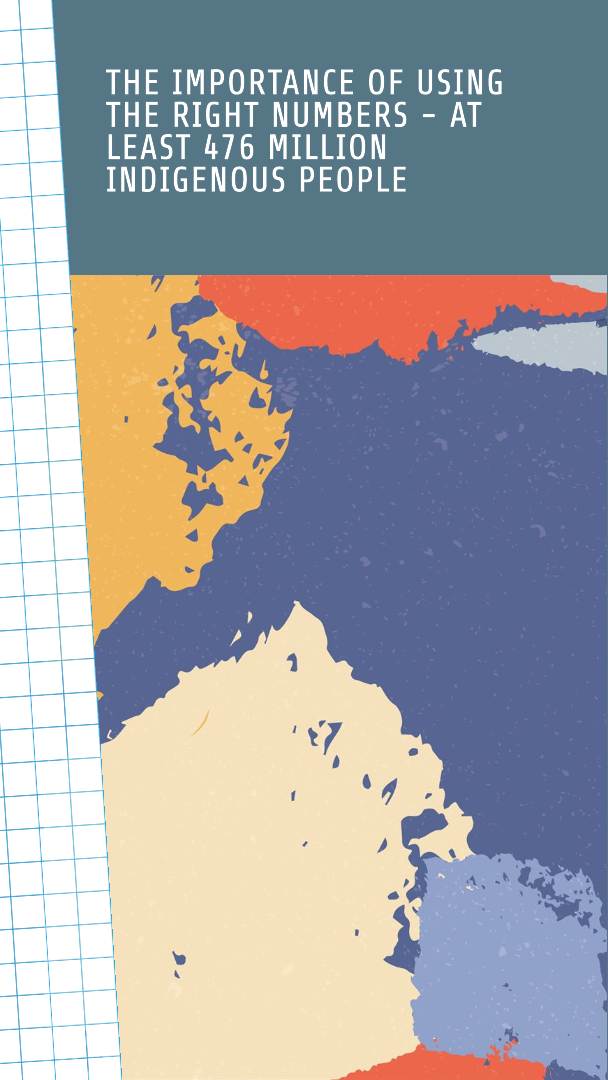There are at least 476 million Indigenous Peoples worldwide!
This is a lower bound estimate determined by the ILO, as many Indigenous Peoples are not officially recognized or counted by their governments.
What is a lower bound estimate?
A lower bound estimate is an estimate of the minimum value or quantity of something, based on the available data or information. It is often used when there is uncertainty or variability in the data, or when the data is incomplete or missing. A lower bound estimate can be used to provide a conservative or cautious estimate that is unlikely to be lower than the true value or quantity.
In this case, it is used in order to address the lack of official recognition of Indigenous peoples by official statistics, and provide a minimum number of Indigenous Peoples’ globally.
Challenges faced:
Indigenous Peoples are among the most marginalized and vulnerable groups in the world, facing multiple challenges and barriers to their rights, well-being, and development.
Indigenous Peoples often lack formal recognition over their lands, territories and natural resources, which are essential for their livelihoods, cultures, and identities. They are often last to receive public investments in basic services and infrastructure, such as health, education, water, sanitation, and energy. They face discrimination and exclusion from the formal economy, the justice system, and the political processes and decision making that affect their lives. They also suffer from lower life expectancy, higher poverty rates, and poorer health outcomes than non-Indigenous Peoples worldwide.
Invisibility in official statistics is a key component of these challenges. If we do not use the correct figures in relation to what data does exist. We risk further marginalizing and invisibilising their situation.
However, Indigenous Peoples are not only victims of inequality and injustice. They are also agents of change and resilience. Indigenous Peoples own, occupy, or use a quarter of the world’s surface area, where they conserve 80 percent of the world´s remaining biodiversity. They also hold vital ancestral knowledge and expertise on how to adapt, mitigate, and reduce climate and disaster risks. They have valuable contributions to make to the global efforts to achieve sustainable development, protect human rights, and combat climate change.
—
The ILO document that gives the 476 million number is “Implementing the ILO Indigenous and Tribal Peoples Convention No. 169: Towards an inclusive, sustainable and just future”, published in 2020. This report provides a comprehensive overview of the implementation of the ILO Convention No. 169 on Indigenous and Tribal Peoples, which is the only international treaty that specifically addresses the rights of these peoples.
It provides a vital update to an estimate that was decades old. The report provides data and statistics on the situation of indigenous peoples worldwide, based on official sources and estimates.
Implementing the ILO Indigenous and Tribal Peoples Convention No. 169: Towards an inclusive, sustainable and just future.
Read it here: https://lnkd.in/eQPEHCrA

Leave a Reply